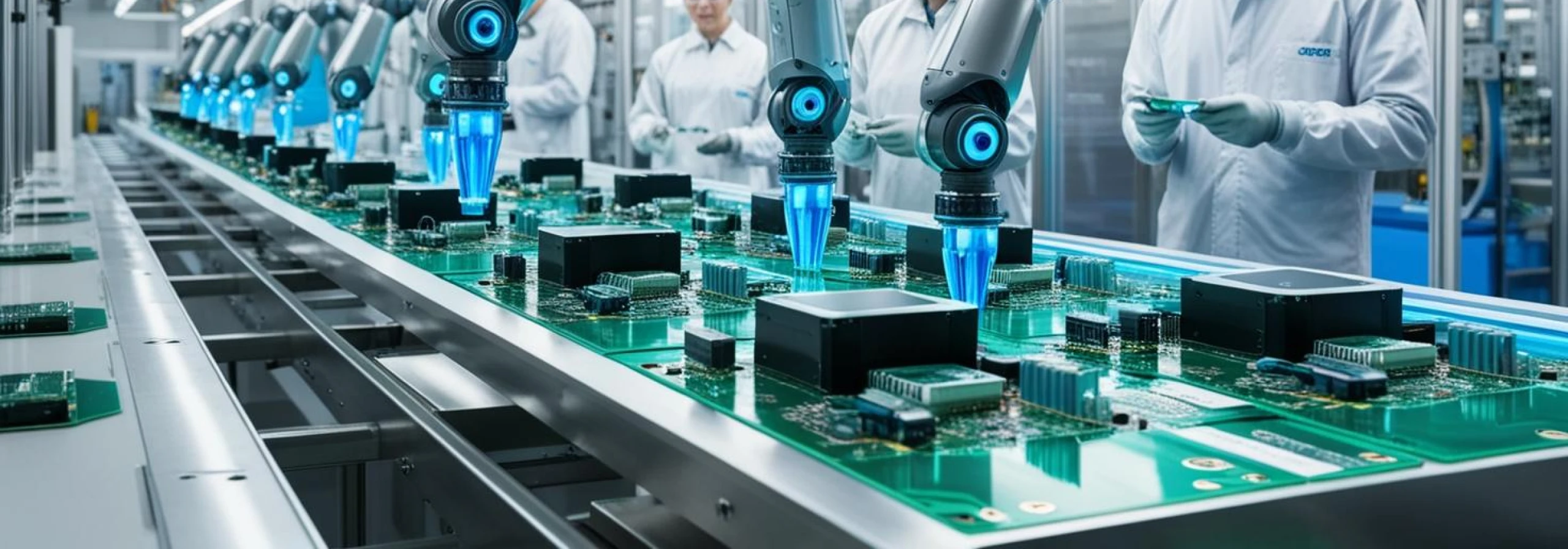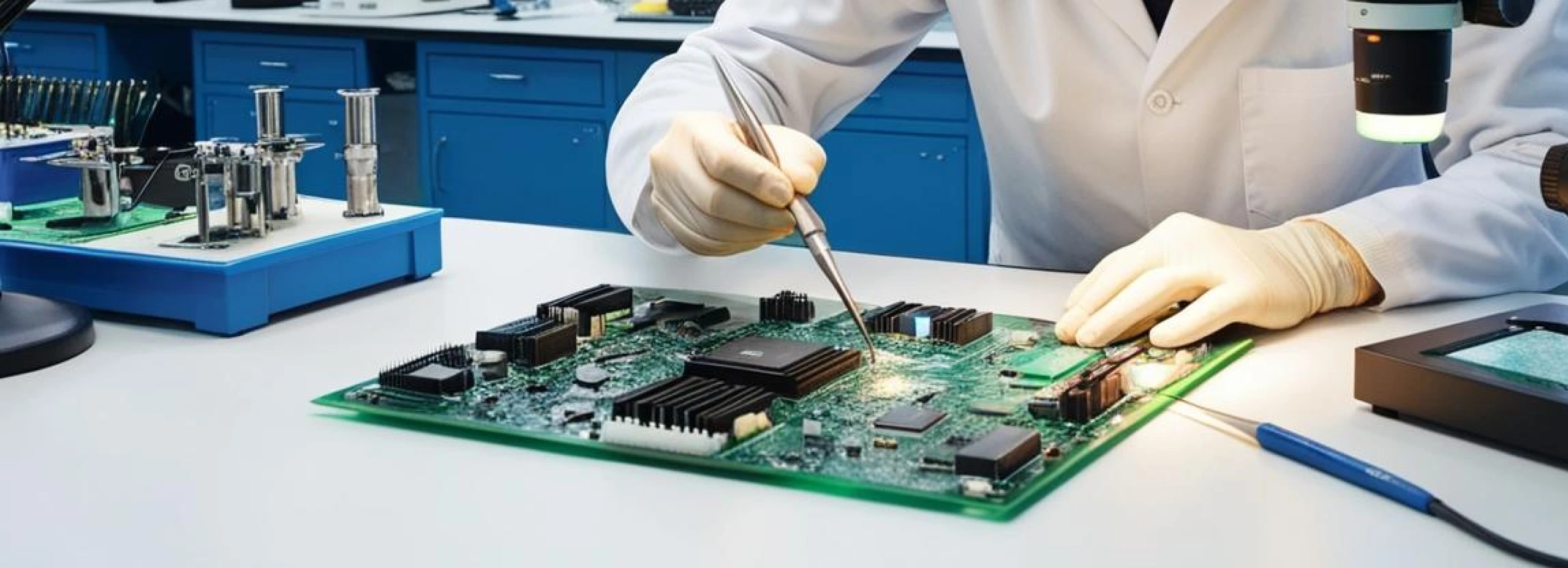Printed Circuit Board (PCB) manufacturing is evolving rapidly, driven by technological advancements, increasing demand for high-performance electronics, and the push for sustainability. As we enter 2025, several key trends are shaping the future of PCB manufacturing. From AI-driven automation to eco-friendly materials, here’s what to expect in the coming years.
1. AI and Automation in PCB Manufacturing
Artificial Intelligence (AI) and automation are revolutionizing PCB production by improving efficiency, accuracy, and quality control.
Key Developments:
- AI-Driven Design Optimization: AI-powered software is streamlining PCB layout design, reducing human errors, and optimizing component placement for better performance.
- Automated Assembly Lines: Robotics and machine learning algorithms enhance the efficiency of soldering, component placement, and defect detection.
- Predictive Maintenance: AI-driven analytics help manufacturers predict and prevent equipment failures, reducing downtime and costs.
2. Miniaturization and High-Density Interconnect (HDI) PCBs
As consumer electronics and IoT devices become smaller and more powerful, PCBs must follow suit.
Key Developments:
- High-Density Interconnect (HDI) Technology: Enables more components to be packed into smaller spaces, leading to compact and high-performance circuit boards.
- Microvia Technology: Improves signal integrity and reduces signal loss, crucial for next-gen applications such as 5G and IoT.
- Flexible & Rigid-Flex PCBs: These PCBs are gaining popularity in wearable devices and compact electronics due to their lightweight and space-saving properties.
3. 5G and High-Frequency PCB Materials
The rollout of 5G networks is influencing PCB design and materials to handle higher frequencies and faster data transmission.
Key Developments:
- Low-Loss Dielectric Materials: Essential for high-frequency signals to ensure minimal signal attenuation.
- Thermal Management Solutions: Advanced cooling techniques such as embedded heat sinks and better substrate materials to handle increased power densities.
- Improved Shielding Techniques: Reducing electromagnetic interference (EMI) to maintain signal integrity in high-speed applications.
4. Eco-Friendly and Sustainable PCB Manufacturing
With increasing environmental concerns, the electronics industry is shifting towards sustainable practices in PCB manufacturing.
Key Developments:
- Lead-Free and Halogen-Free PCBs: Adoption of non-toxic materials to meet environmental regulations such as RoHS and REACH compliance.
- Recyclable and Biodegradable PCBs: Development of circuit boards made from organic substrates and recyclable components.
- Energy-Efficient Manufacturing: Use of renewable energy sources, water recycling systems, and waste reduction strategies in PCB production.
5. Advanced Testing and Quality Control
Ensuring reliability and longevity in PCBs is more critical than ever, especially in mission-critical applications like aerospace, healthcare, and automotive electronics.
Key Developments:
- AI-Powered Inspection Systems: Automated optical inspection (AOI) and X-ray inspection using AI for faster and more accurate defect detection.
- Real-Time Quality Monitoring: IoT-enabled sensors track performance metrics throughout the manufacturing process to identify potential issues early.
- Functional Testing Innovations: Advanced in-circuit testing (ICT) and flying probe testing methods for enhanced PCB validation.
6. The Rise of Additive Manufacturing (3D Printed PCBs)
3D printing technology is disrupting traditional PCB manufacturing by offering new possibilities for rapid prototyping and complex circuit designs.
Key Developments:
- Multi-Layer 3D Printed PCBs: Allowing for more intricate designs with reduced production time and material waste.
- Conductive Ink Technology: Enables the printing of circuits on flexible or unconventional substrates like textiles and plastics.
- Customization and On-Demand Production: Manufacturers can produce PCBs tailored to specific needs without long lead times.
7. Integration of Embedded Components
Embedding passive and active components directly into PCB layers is a growing trend that enhances performance and reliability.
Key Developments:
- Space and Weight Reduction: Ideal for aerospace, medical devices, and compact consumer electronics.
- Improved Signal Integrity: Reduces parasitic effects and enhances circuit performance.
- Cost Efficiency: Decreases the need for additional components, reducing overall material costs.
Conclusion
The future of PCB manufacturing in 2025 is set to be driven by advancements in AI, miniaturization, 5G technology, sustainability, and additive manufacturing. As these trends continue to evolve, PCB manufacturers must stay ahead by adopting cutting-edge technologies and sustainable practices. Whether it’s enhancing efficiency through automation, developing environmentally friendly processes, or integrating high-speed materials, the industry is poised for a transformative shift.
As businesses and innovators look ahead, those who embrace these trends will lead the way in shaping the next generation of electronics manufacturing.


